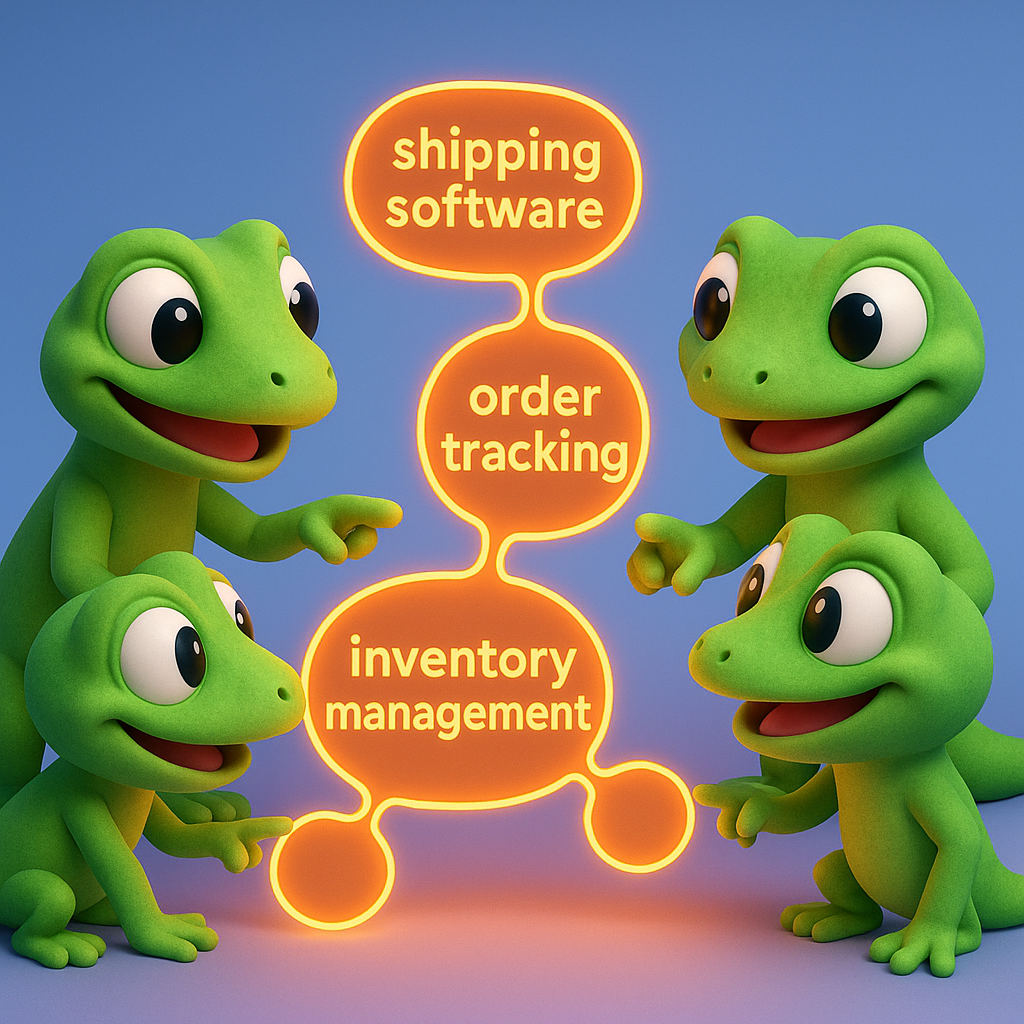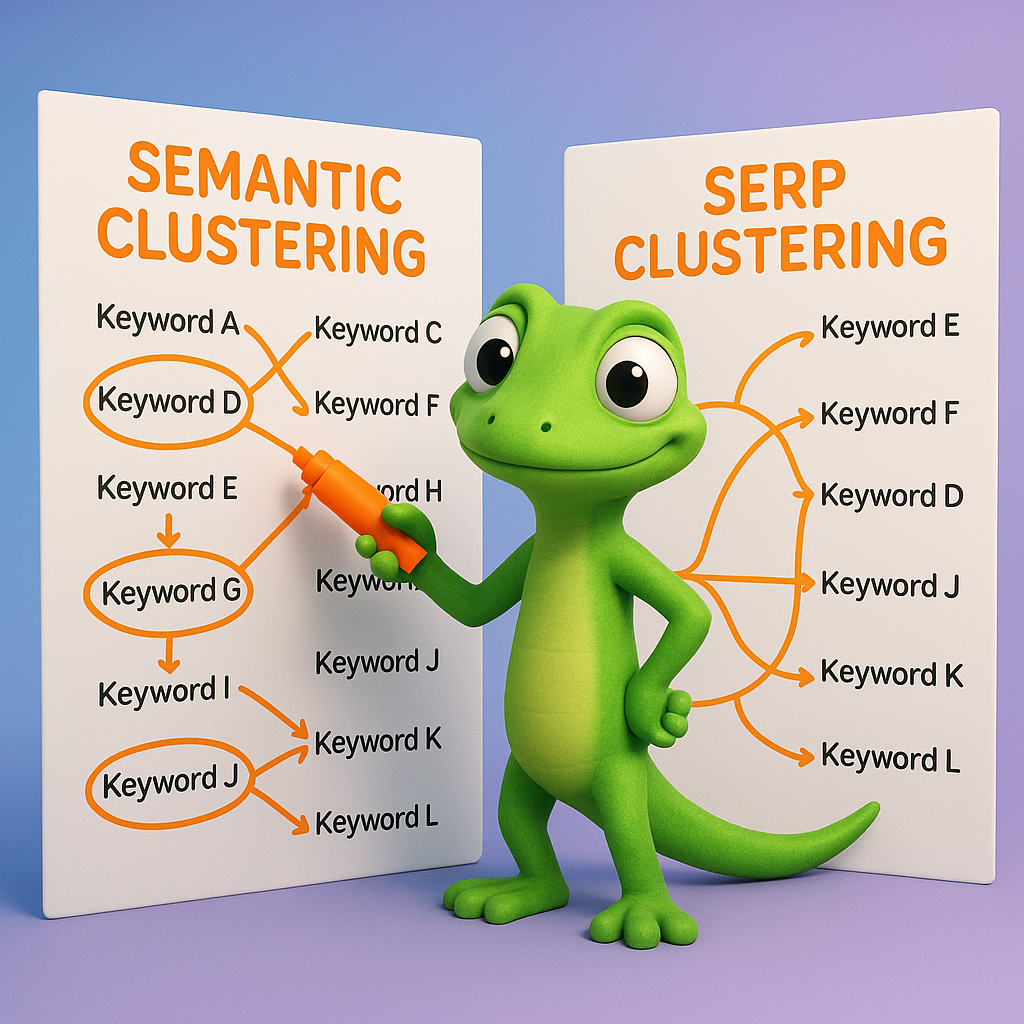How to Group Keywords for Effective SEO and Ad Campaigns
Keyword grouping is an essential practice in modern search marketing that organizes related search terms into clusters based on relevance, similarity, or shared themes. This structured approach allows SEO professionals and marketing leaders to optimize both content strategy and paid search campaigns for better performance.

What is keyword grouping?
Keyword grouping is the process of organizing keywords by relevance, intent, or shared characteristics into logical clusters. Rather than treating each keyword as an isolated target, grouping creates meaningful collections of related terms that:
- Share similar user intent
- Target the same topic or subtopic
- Perform similarly in search results
For example, instead of targeting “shipping software,” “eCommerce shipping software,” and “online store shipping tools” separately, you’d recognize these as part of the same intent cluster that should be addressed by a single piece of content or ad group.
There are two primary approaches to keyword grouping:
-
Semantic clustering: Groups keywords based on their meaning and intent using natural language processing (NLP). This approach is fast and cost-effective but can yield inconsistent results depending on the NLP model used. For instance, “best coffee” and “coffee reviews” might be grouped together because they both relate to evaluating coffee quality.
-
SERP clustering: Groups keywords based on overlapping search results. When two keywords return similar search engine results pages (SERPs), they likely share the same user intent and should be grouped together. For example, “how to brew coffee” and “coffee brewing guide” would be clustered if they have 70% or more of the same results. This method is highly effective for SEO but requires more data collection.

Why keyword grouping matters
For SEO:
-
Reduces content cannibalization: Prevents multiple pages from competing for the same keywords, which can dilute your site’s authority. If you have separate pages targeting “shipping software” and “eCommerce shipping software,” they’ll likely compete against each other in search results.
-
Improves topical authority: Creates comprehensive coverage of topics rather than fragmented content. By addressing all related keywords in a single piece, you signal to search engines that your content provides thorough information on the topic.
-
Enhances content relevance: Aligns content with actual search intent, improving user experience and engagement metrics like time on page and bounce rate.
-
Streamlines content planning: Provides clear direction for what to create by identifying logical content units that address related search queries.
For paid advertising:
-
Increases ad relevance: Improves Quality Scores in Google Ads by ensuring ads directly address the intent behind keyword groups. This means better ad positions and overall performance.
-
Reduces wasted spend: Targets precise user intent rather than broad, ambiguous terms. By organizing keywords by intent, you avoid showing ads to users unlikely to convert.
-
Lowers cost-per-click (CPC): Better relevance typically means lower costs as platforms reward ads that match user intent with lower CPCs.
-
Improves click-through rates (CTR): Ads better match what users are searching for, increasing the likelihood they’ll click. When your ad specifically addresses “eCommerce shipping software” rather than generic “shipping solutions,” users with that specific need are more likely to engage.
How to effectively group keywords
1. Start with comprehensive keyword research
Begin by gathering keywords from multiple sources:
- SEO tools like Semrush or ContentGecko’s free keyword research tools
- Competitor keyword analysis to identify terms your competitors are ranking for
- Google Search Console data from your existing site to find queries already driving traffic
- Long-tail keywords that may have lower competition but high conversion potential
Don’t limit yourself to high-volume keywords—often, the most valuable clusters include moderate-volume terms with high intent.
2. Create top-level keyword groups
Organize your keywords into broad categories first. For example, an eCommerce platform might have groups like:
- Product features (e.g., “inventory management software,” “order processing systems”)
- Pricing information (e.g., “eCommerce platform pricing,” “affordable shipping software”)
- Integration capabilities (e.g., “shipping software Shopify integration,” “WooCommerce shipping tools”)
- Customer success stories (e.g., “shipping software case studies,” “eCommerce shipping ROI”)
These broad groups provide the foundation for your more specific subgroups.
3. Create more specific subgroups
Within each top-level group, create more targeted clusters based on:
- Search intent: Informational (“how does shipping software work”), navigational (“ShipStation login”), transactional (“buy shipping software”), or commercial (“best shipping software for small business”)
- Topic relevance: How closely related the terms are—“international shipping software” and “global eCommerce shipping” would be grouped together
- Keyword difficulty: Group terms with similar competition levels to strategically prioritize content creation
- SERP overlap: Terms that return similar search results, indicating Google views them as addressing the same need
Each subgroup should be focused enough that a single piece of content or ad group could effectively target all included keywords.
4. Use the right tools for clustering
Several tools can help automate and improve your keyword grouping:
- ContentGecko’s free keyword clustering tool: Groups keywords based on SERP overlap without requiring signup, making it ideal for testing clustering strategies
- Keyword Insights: Provides intent-based clustering that helps identify user goals behind searches
- SEO Scout: Offers semantic clustering capabilities using NLP to identify related terms
- Rush Analytics: Identifies keyword clusters and content gaps in your existing strategy
These tools can significantly speed up the process, especially when dealing with thousands of keywords.
5. Optimize your keyword groups
Once you’ve created your initial groups, refine them by:
- Removing irrelevant keywords that don’t align with the group’s intent
- Adjusting group sizes (neither too broad nor too narrow)—aim for 10-30 related keywords per content piece
- Identifying primary keywords for each group (typically the highest volume or most commercially valuable term)
- Ensuring each group has a clear intent focus that can be addressed by a single piece of content
For example, a “shipping rate comparison” cluster might include “eCommerce shipping rate calculator,” “compare shipping prices,” and “best shipping rates for online stores”—all addressing the same core intent.
6. Translate groups into content strategy
For each keyword group:
- Determine the appropriate content format (blog post, product page, landing page)
- Create comprehensive content that covers all keywords in the cluster
- Use your primary keyword in key on-page elements (title, H1, URL)
- Incorporate secondary keywords naturally throughout content
For instance, a cluster around “international shipping software” might become a feature page that addresses global shipping rates, customs documentation, and international carrier integration—all topics identified in your keyword group.
The ContentGecko AI content writer can help generate optimized content that naturally incorporates your keyword clusters without keyword stuffing.
Best practices for keyword grouping
For SEO keyword clustering:
- Prioritize SERP-based clustering: Since Google determines what ranks together, use tools that analyze actual search results overlap rather than just semantic similarity
- Focus on user intent: Group keywords that serve the same purpose rather than just sharing words—“shipping software reviews” and “top shipping platforms” share intent despite different wording
- Create topic clusters: Build content hubs with pillar pages and supporting content that comprehensively cover your subject area
- Consider SERP features: Group keywords that trigger similar SERP features (featured snippets, knowledge panels) as these indicate similar treatment by search engines
- Monitor changing SERPs: Periodically reassess your clusters as search results evolve—what Google considered similar last year might be treated differently today
For paid search keyword grouping:
- Create tightly themed ad groups: Keep groups focused on a specific product, service, or intent to maximize relevance scores
- Match keywords to landing pages: Ensure each group directs to highly relevant content that directly addresses the search intent
- Consider match types: Organize keywords by how they’ll be matched (exact, phrase, broad) to balance reach and precision
- Balance volume and intent: Group high-volume terms separately from more specific ones to maintain appropriate budgets and bidding strategies
- Test and iterate: Continuously refine groups based on performance data—split underperforming groups and combine ones with similar metrics
Common pitfalls to avoid
-
Over-clustering: Creating too many small groups that fragment your strategy and make management unwieldy. If you have 20 different groups with 2-3 keywords each, you’re likely being too granular.
-
Under-clustering: Making groups too broad, diluting relevance and performance. A group containing both “shipping software pricing” and “how to package fragile items” lacks focus and can’t be effectively targeted.
-
Ignoring long-tail variations: Missing opportunities to target specific intent by focusing only on head terms. Long-tail keywords like “cheapest shipping software for small Etsy shops” often convert better despite lower volume.
-
Focusing only on volume: Prioritizing high-volume terms over high-intent terms. A keyword with 500 monthly searches but clear purchase intent is often more valuable than one with 5,000 informational searches.
-
Static grouping: Failing to update clusters as search behavior changes. What worked six months ago may not be optimal today as markets, products, and search patterns evolve.
TL;DR
Keyword grouping organizes related search terms into clusters based on intent, meaning, or SERP similarity. For SEO, SERP-based clustering using tools like ContentGecko provides the most actionable insights by aligning with how Google actually ranks content. For paid search, tightly themed groups improve Quality Scores and campaign ROI. Effective keyword grouping reduces content cannibalization, improves topical authority, enhances ad relevance, and creates a more strategic approach to both organic and paid search marketing.
